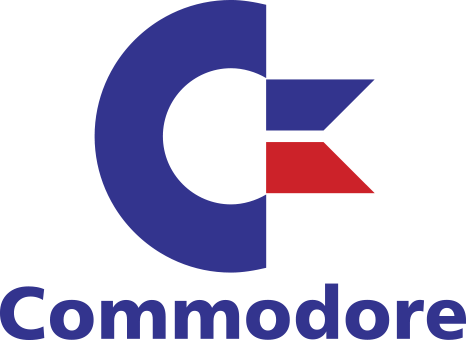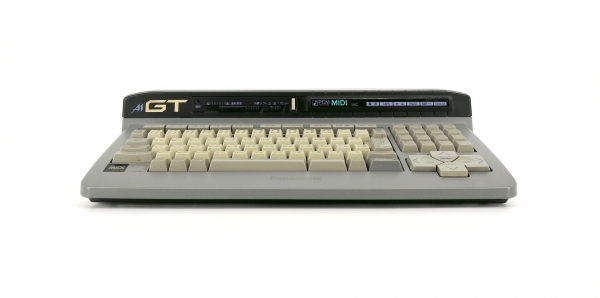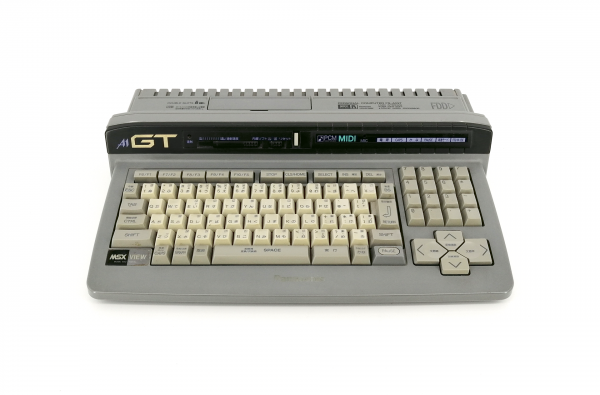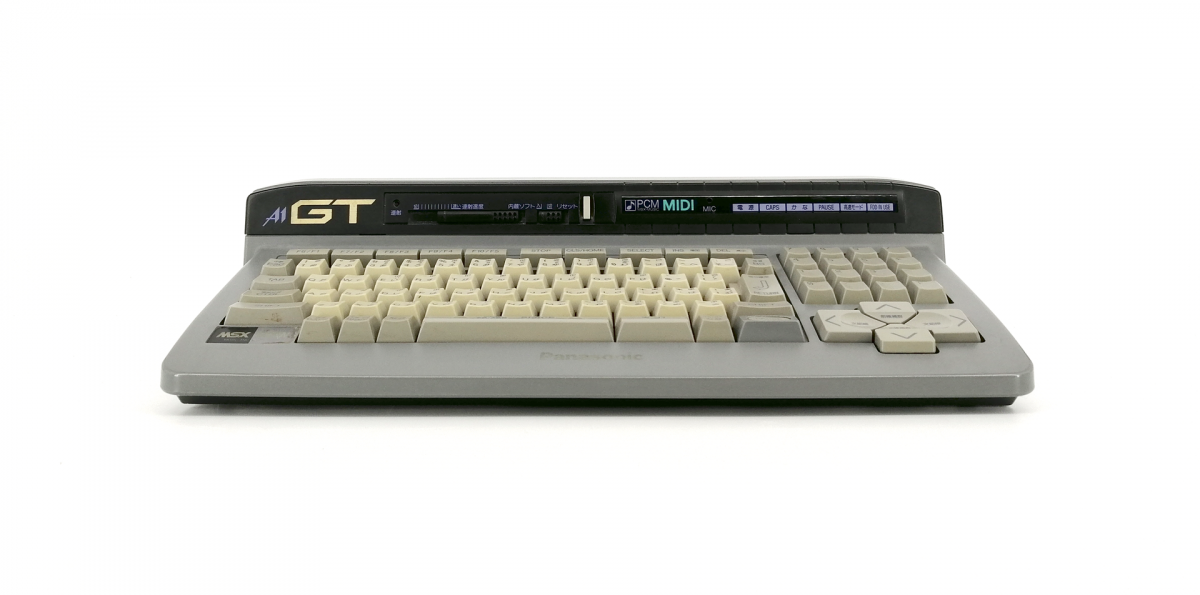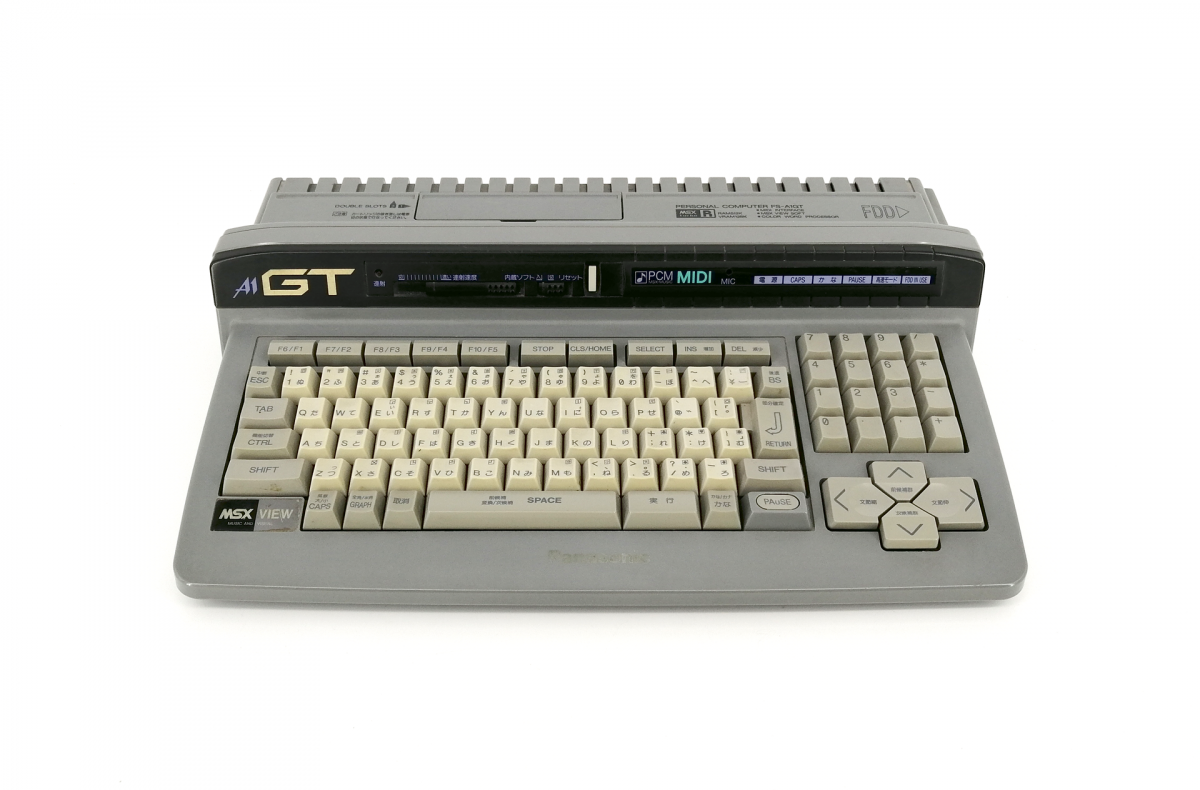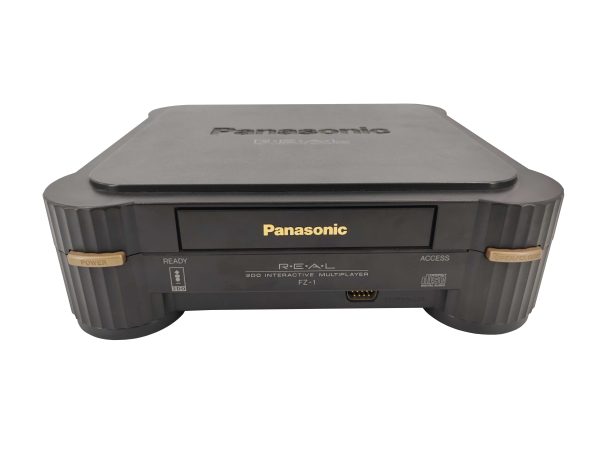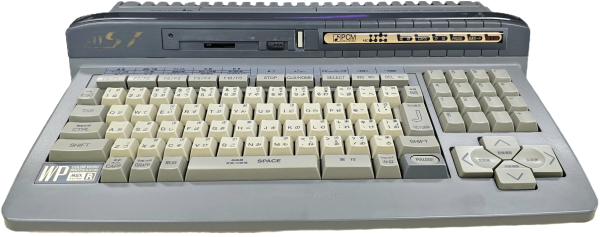Panasonic FS‑A1GT
The Panasonic FS-A1GT MSX turbo R is the last MSX computer ever produced and follows the latest standard for the MSX line.
Panasonic FS‑A1GT
The Panasonic FS-A1GT MSX turbo R is the last MSX computer ever produced and follows the latest standard for the MSX line.
Originally, in 1990, Yamaha and ASCII announced the V9978 Video Display Processor, the video chip for the MSX3. It was a very capable video IC, with two different sets of video modes.
In bitmap modes, it was capable of up to 768 x 240 resolution (up to 768 x 480 in interlace mode), up to 32,768 colors, superposition, hardware scrolling,
and even a hardware cursor for Windows-like operating systems. However, the most impressive feature of these modes was the use of a fast hardware bitblock data mover.
The MSX2 video IC was also equipped with a hardware bit mover, but the new one would be 20 times faster!
In pattern mode, it was able to use SNES class features. Multiple layers, 16k patterns, different palettes, 128 sprites, maximum 16 sprites per scanline. So basically an SNES but without mode7.
However, something went wrong and the project was cancelled.
Probably because of the great interest in marketing MSX machines and the growing interest in game consoles and powerful PC-like computers (mainly for word processing purposes), companies were less enthusiastic about making a new MSX machine.
MSX's biggest software supporters defected to Nintendo and other computers/gaming machines. Sony chose to make their own game console.
Instead came the MSX Turbo-R, a supercharged MSX2+. Some people say that ASCII failed to deliver the new VDP in time for the 1990 release,
so they only opted for the new CPU (named R800). However, the specifications and pinout of the V9978 were in some data books of the era.
Panasonic was the only company to manufacture and market MSX turbo R computers, and they were only sold in Japan.
Several machines were imported to Europe via gray market imports.
The FS-A1ST was the first and was succeeded by the FS-A1GT, which had more RAM and MIDI IN and OUT.
After these two machines, it ended when Panasonic moved to their 3DO game console.

